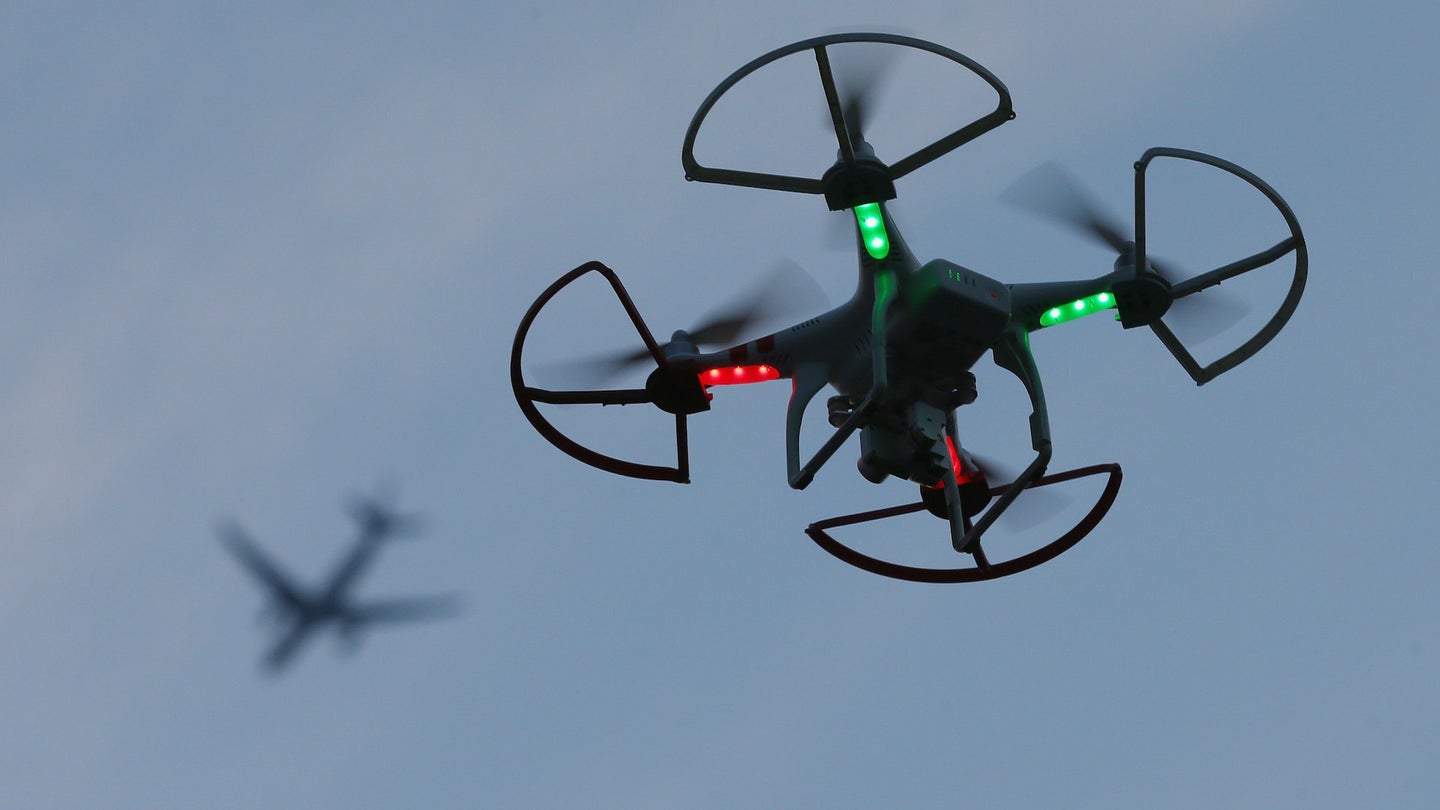Aviation Authority Says Drone’s Near-Miss With Virgin Atlantic Flight Was Closest Ever
The U.K. Airprox Board found the distance between the airplane and a UAV was 10 feet.

The U.K. Airprox Board, which investigates near-misses between commercial aircraft and rogue aerial vehicles, has released its findings on the Virgin Atlantic flight that nearly collided with an unmanned aerial vehicle in June, Sky News reports. According to the Civil Aviation Authority's assessment of this investigation, the approximated 10-foot distance between drone and aircraft is the closest near-miss ever reported in the United Kingdom.
The B787-9 Dreamliner jet was headed to Heathrow Airport on June 25 when a drone illegally reaching 3,200 feet and nearly collided with the airplane, endangering the 264 passengers onboard. As in the United States, drones in the U.K. are not permitted to fly above 400 feet and are additionally prohibited from encroaching on commercial flight paths or operating near airports. The drone was also piloted beyond the operator’s visual line of sight, which is illegal, as well.
“The drone was being flown beyond VLOS (visual line of sight) limits and on an airfield approach path such that it was endangering other aircraft at that altitude and position,” the report said. “The board agreed that the incident was therefore best described as the drone was flown into conflict with the B787. The board considered that the pilot’s overall account of the incident portrayed a situation where providence had played a major part in the incident and/or a definite risk of collision had existed.”
We recently reported on a study by the University of Dayton’s Research Institute, which found that a quadcopter could do major structural damage to an airplane’s wing during collision. Last year we also covered research that found a drone to be more of a danger to airplanes than birds. It’s no wonder the airline called for substantial action to be taken to avoid future incidents like the one above Heathrow in June.
“It’s vital that action is taken to regulate the use of drones near airports, and we urge the government to consider further proposals,” a Virgin Atlantic spokesperson said.
The United Kingdom has seen its fair share of near-misses as a result of irresponsible drone pilots and unnecessarily affected airplane pilots. Over the course of two years, for instance, airplane-drone near-misses have more than tripled in the region. Even the small Ports of Jersey Airport in the Channel Islands has seen 20 incidents of irresponsible UAV use in the past three years.
Ultimately, this is hopefully still a symptom of the growing pains of our nascent drone culture, where users haven’t yet realized how impactful their decision-making can be on those around them, with the promise of awareness looming on the horizon. As it stands, however, this is a disconcerting, dangerous trend that we should all focus on eradicating from our positive, innovative culture of recreational drone piloting.
